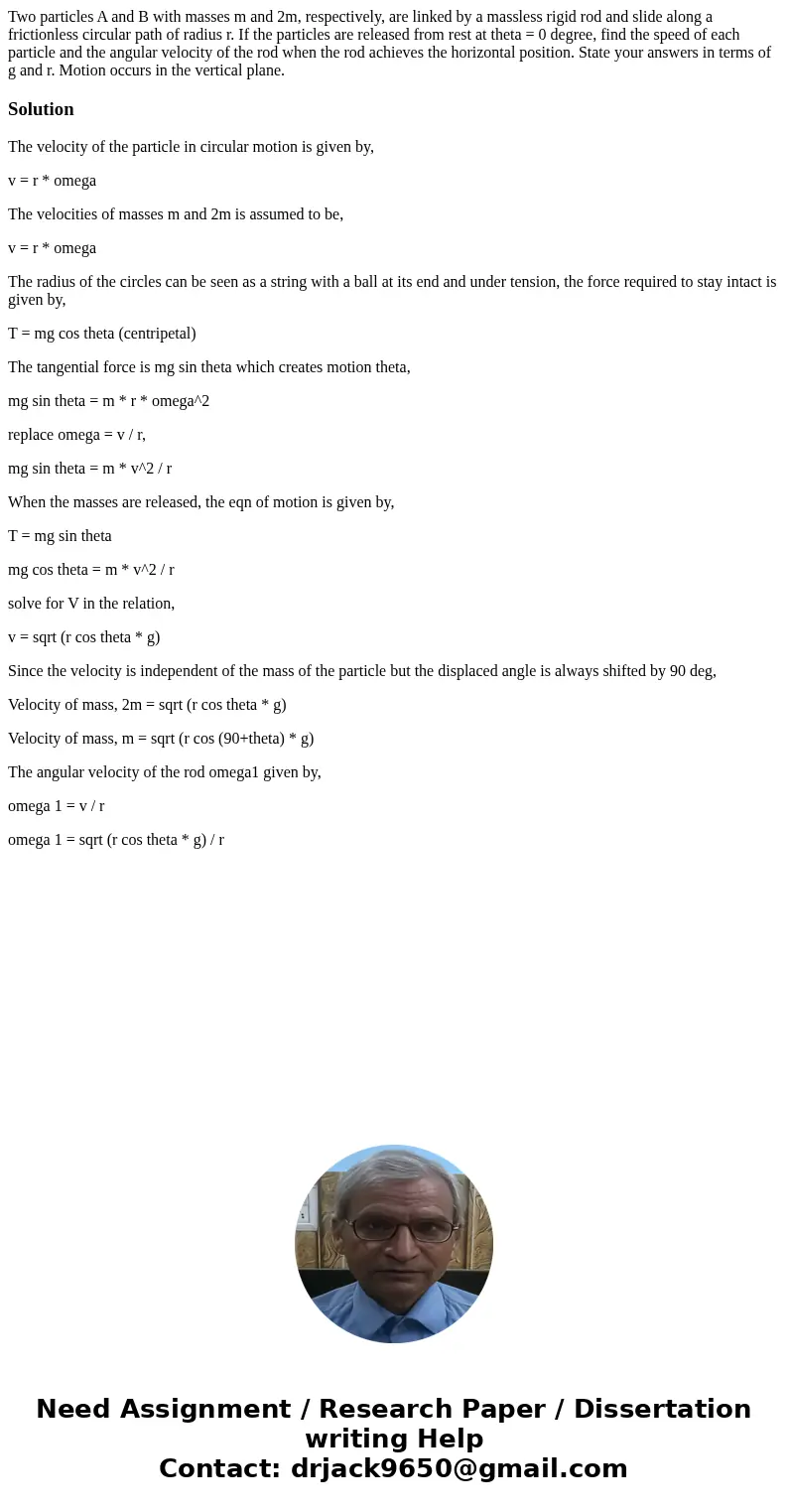Two particles A and B with masses m and 2m respectively are
Solution
The velocity of the particle in circular motion is given by,
v = r * omega
The velocities of masses m and 2m is assumed to be,
v = r * omega
The radius of the circles can be seen as a string with a ball at its end and under tension, the force required to stay intact is given by,
T = mg cos theta (centripetal)
The tangential force is mg sin theta which creates motion theta,
mg sin theta = m * r * omega^2
replace omega = v / r,
mg sin theta = m * v^2 / r
When the masses are released, the eqn of motion is given by,
T = mg sin theta
mg cos theta = m * v^2 / r
solve for V in the relation,
v = sqrt (r cos theta * g)
Since the velocity is independent of the mass of the particle but the displaced angle is always shifted by 90 deg,
Velocity of mass, 2m = sqrt (r cos theta * g)
Velocity of mass, m = sqrt (r cos (90+theta) * g)
The angular velocity of the rod omega1 given by,
omega 1 = v / r
omega 1 = sqrt (r cos theta * g) / r

 Homework Sourse
Homework Sourse